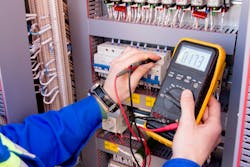Intrinsically safe (IS) systems are designed to operate safely in hazardous environments where the presence of flammable gases, vapors, dust or fibers could create a fire or explosion risk. These systems are designed to minimize the risk of ignition by limiting the amount of electrical and thermal energy that is produced or transmitted.
Intrinsically safe systems are used in a variety of industries and applications, including oil and gas, chemical processing, pharmaceutical manufacturing and mining. They are particularly important in environments where the presence of flammable materials or gases makes the use of standard electrical equipment potentially hazardous.
To be considered intrinsically safe, a system must meet specific standards and guidelines set by regulatory bodies such as the National Electrical Code (NEC) and the International Electrotechnical Commission (IEC). These standards ensure that IS systems are designed and tested to operate safely in hazardous environments.
Because they aid in accident prevention and personnel protection, IS systems are crucial in some environments. The possibility of a fire or explosion exists constantly in hazardous environments, and using regular electrical equipment may even make it more likely.
Limiting the production or transmission of electrical and thermal energy allows IS systems to function safely in these conditions. This lessens the likelihood of accidents and helps to prevent ignition.
Intrinsically safe systems not only help to prevent accidents, but they also safeguard employees by fostering a safer working environment. Standard electrical equipment can put workers in potentially dangerous situations in hazardous environments, such as electrical shock risk or exposure to hazardous materials. Intrinsically safe systems reduce these dangers, thereby enhancing worker task safety.
In general, IS systems are critical in some settings because they support personnel safety and accident prevention.
Input/output (I/O) systems are an important component of automation and control systems. They are responsible for receiving and transmitting data and signals between various devices and systems.
Input/output systems are typically used to connect sensors, controllers and actuators in a control system. Sensors detect changes in the environment and transmit this information to the controller, which processes the data and sends a signal to the actuators to perform a specific action.
Input/output systems play a critical role in automation and control by enabling the exchange of data and signals between different devices and systems. They allow for the automation of processes and the real-time monitoring and control of equipment and machinery.
Input/output systems can be analog or digital, depending on the type of data and signals they transmit. Analog I/O systems transmit continuous signals, such as voltages or currents, while digital I/O systems transmit discrete signals, such as binary code.
Overall, I/O systems are an essential component of automation and control systems, enabling the exchange of data and signals between different devices and systems and enabling the automation and control of processes and equipment.
Intrinsically safe I/O systems are designed to operate safely in hazardous environments where the presence of flammable gases, vapors, dust or fibers could create a fire or explosion risk. Standard I/O systems, on the other hand, are not designed for use in these types of environments and may not meet the necessary safety standards.
One key difference between IS I/O systems and standard I/O systems is the amount of electrical and thermal energy that they produce or transmit. Intrinsically safe systems are designed to minimize the risk of ignition by limiting the amount of energy produced or transmitted, while standard systems may produce and transmit higher levels of energy.
Another difference is the materials and construction of the systems. Intrinsically safe systems are often built with special materials and designs that help to reduce the risk of ignition, such as flame-resistant enclosures and circuit boards. Standard I/O systems may not have these features and may not be suitable for use in hazardous environments.
Overall, the main difference between IS I/O systems and standard I/O systems is the level of safety they provide in hazardous environments. Intrinsically safe systems are specifically designed to operate safely in these environments, while standard systems may not meet the necessary safety standards.
Systems that are intrinsically safe are crucial in dangerous settings because they protect people and help avoid accidents. The risk of fire or explosion is always present in these conditions, and using regular electrical equipment could possibly make it worse.
By limiting the amount of electrical and thermal energy produced or transmitted, IS systems are created to function safely in hazardous environments. This lessens the likelihood of accidents and helps to prevent ignition.
Intrinsically safe systems protect personnel by fostering a safer work environment in addition to aiding in accident prevention. Standard electrical equipment can put workers in potentially dangerous situations, like the risk of electrical shock or exposure to dangerous materials, when used in hazardous environments. By reducing these risks, IS systems increase worker safety.
Overall, because they help to ensure employee safety and avert accidents, IS systems are crucial in dangerous environments.
About the Author
Shawn Cox
Contributing Editor
Shawn Cox is a licensed master electrician/PLC programmer. He was co-owner/operator of Bobby Cox Electric for 15 years and is currently employed by BMW Manufacturing as an ESA. Contact him at [email protected].

Leaders relevant to this article:

